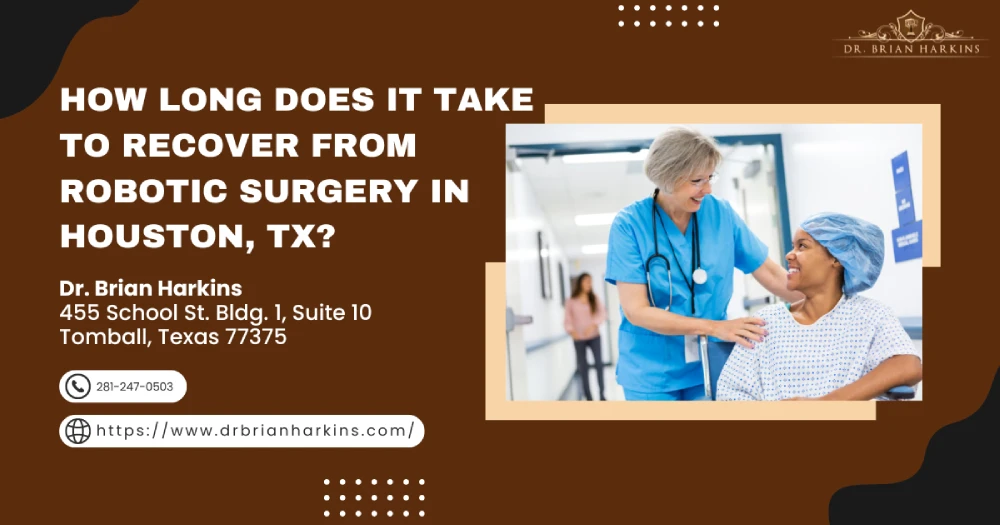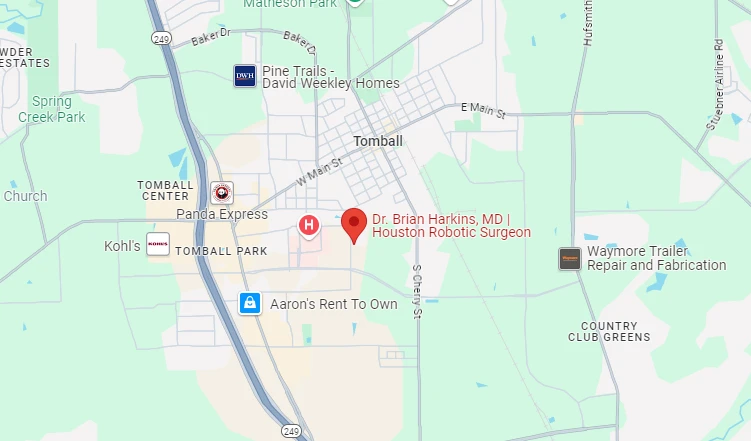
Robotic surgery in Houston usually delivers quicker recovery times than traditional open approaches, often letting patients return to normal activities within weeks, not months. If your surgeon has recommended a minimally invasive robotic procedure—perhaps with the da Vinci® surgical system—you probably want a clear, practical roadmap for the post-operative period. If you’re asking, “How long does it take to recover from robotic surgery in Houston, TX?”, the answer depends on several factors, but most patients resume light activities within a few days and return to full activity in 4–6 weeks. Below, we explore the different stages of healing, share insights from Houston’s leading hospitals near the Bay Area, and outline proven tips to enhance every phase of your recovery after robotic surgery.
A robotic surgical system translates a surgeon’s hand movements into precise, tremor-free actions. The da Vinci® platform, the most common robot in Houston operating rooms, allows surgeons to perform complex procedures through tiny ports. This minimally invasive surgery means smaller incisions, less blood loss, and dramatically less pain than open or even standard laparoscopic surgery—key drivers of faster recovery times.
| Post-Op Phase | How You’ll Feel | Allowed Activities | Pro Tips |
|---|---|---|---|
| 0–24 Hours | Grogginess, shoulder gas pains | Assisted hallway walks | Use incentive spirometer; start sipping water |
| Days 1–3 | Moderate fatigue, improving appetite | Bathroom trips, sit up for meals | Warm liquids, avoid carbonation, monitor incision |
| Days 4–7 | Energy bump | Light household tasks, shower | Walk 5–10 minutes every few hours |
| Weeks 2–3 | Minimal pain, internal healing | Desk work, drive when off narcotics | Begin gentle core or pelvic-floor work |
| Weeks 4–6 | Strength returning | Light workouts, travel | Respect lifting limits—usually <20 lbs |
| Week 8+ | Full stamina | Unrestricted exercise, heavy lift | Schedule final clearance visit |
A robotic cholecystectomy often means a same-day discharge, but a robotic-assisted colorectal resection or cancer prostatectomy can add extra nights in the hospital and restrict heavy lift activities for eight weeks.
Houston Methodist, Memorial Hermann, Baylor St. Luke’s, and North Texas Surgical Specialists perform thousands of robotic procedures yearly. Their dedicated robotic teams apply ERAS protocols that reduce narcotic use, accelerate ambulation, and shrink the overall recovery period.
Start walking the day of surgery if cleared. Increase your distance 10 % daily, then add gentle stretching by day three. Light cardio at week two and resistance training at week four (if pain-free) help rebuild core support.
Target 60–80 g of protein, emphasize high-fiber foods, and drink 2–3 L of water. Proper hydration reduces pain perception and supports tissue oxygenation, especially important in robotic-assisted surgery where rapid recovery is the goal.
Alternate acetaminophen with NSAIDs to maintain baseline relief, keeping opioids for breakthrough pain. A consistent bedtime routine and naps when your patient’s body requests rest speed cellular repair.
Open surgery involves a 4–8-inch incision, higher pain, and six-week down-time. Standard laparoscopic surgery improves that picture, yet the benefits of robotic surgery—enhanced precision, 3D visualization, and wristed instruments—further reduce trauma, pain, and narcotic requirements.
Robotic surgery allows surgeons to perform complex tasks through tiny ports with outstanding precision. The result: less pain, smaller scars, and faster recovery times—often within two to six weeks. Stick to your post-op plan, nourish your body, move daily, and keep an open dialogue with your Houston care team. One confident step at a time, you’ll reclaim the activities you love.
Recovery typically takes between two to six weeks, with most patients resuming daily activities like walking, light chores, and desk work within the first week. More complex procedures or underlying health conditions may extend recovery. Working with experienced Houston robotic surgeons helps ensure faster healing and reduced complications.
Robotic surgery uses 5–8 mm incisions, so you will have tiny scars rather than a large one. These often fade to hairline marks within six months. Silicone sheets and sun protection further improve final appearance.
You can usually shower 24–48 hours after your dressings come off. Immersion—swimming pools, warm baths, or the Galveston Bay surf—should wait until all incisions are watertight and cleared by your surgeon, generally three weeks.
Yes. The da Vinci® robotic system magnifies anatomy and stabilizes instruments, leading to highly controlled dissection. This precision frequently results in less intra-operative blood loss, which supports faster recovery and fewer transfusions compared to open methods.
Not always, but many oncologic surgeons prefer robotic platforms when intricate dissection around vessels or nerves is needed. Enhanced 3D vision and wristed tools facilitate complete tumor removal while preserving healthy tissue, which can translate into better functional outcomes.
ERAS—Enhanced Recovery After Surgery—bundles evidence-based practices such as limited fasting, multimodal pain control, and early ambulation. When combined with robotic techniques, ERAS can shorten hospital stays, cut opioid use, and get you back to work sooner.
Most U.S. insurers—including Medicare—cover robotic procedures if they are the standard of care for your diagnosis. Your surgeon’s billing team will pre-authorize the case, but always verify deductible and co-insurance responsibilities before the operation.
Because robotic instruments allow fine suturing and tissue handling, reproductive organs often sustain less trauma. For conditions like fibroids or endometriosis, preserving ovarian function and uterine integrity can improve future fertility compared to open resections.
Short car rides are usually safe after the first week, provided you can sit comfortably and move your legs. Long flights or road trips require frequent standing breaks to prevent blood clots. Discuss timing with your surgical team, especially for vascular procedures.
Extreme obesity or very small body habitus can pose challenges, but advances in port placement techniques and bariatric-specific instruments have expanded eligibility. A thorough evaluation determines whether robotic, laparoscopic, or open surgery offers the safest solution.
Most anesthetic agents are exhaled within 24 hours. However, carbon dioxide gas used to inflate the abdomen (insufflation) can irritate the diaphragm, causing shoulder pain for two to three days. Walking and warm compresses help dissipate residual gas.
Robotic systems have multiple fail-safes. If an instrument or camera stops responding, the surgeon immediately switches to backup equipment or converts to standard laparoscopy or open surgery. You remain safe under continuous monitoring and sterile conditions.
While the technology itself is expensive, shorter lengths of stay, fewer complications, and faster returns to productivity can offset upfront expenses. Discuss total cost of care—not just operating room fees—with your provider and insurer for a clearer picture.


Dr. Brian Harkins is a renowned surgeon specializing in advanced, minimally invasive, and robotic surgical techniques. With a dedication to innovation and personalized patient care, he has transformed countless lives by delivering exceptional outcomes.

I want a website like this, where do i start?